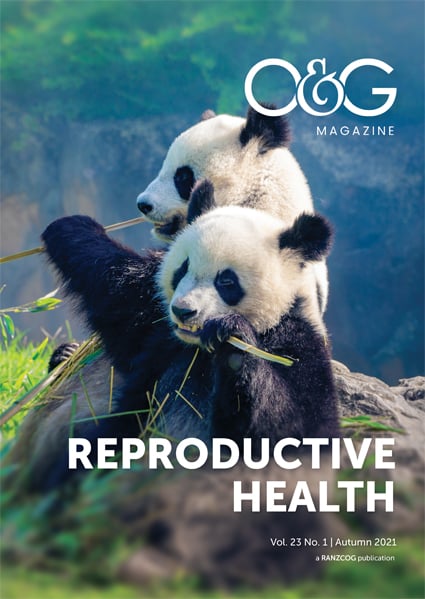I was never good at science. In high school I memorised the table of elements because it sounded like a poem to me – hydrogen, helium, lithium, beryllium – but I never understood how the elements fitted together. Letters in words made perfect sense, but letters that stood for chemical compounds did not. Even biology was hard. How cells behaved, how anatomical parts interacted, how genes transmitted information, none of this information would stick to my brain.
Embarking on an IVF program felt like a return to this state of anxious ignorance. The gynaecologist explained to me what would happen, drawing little pictures on a notepad to give me visual images of the process. But an hour after the appointment I’d forgotten the details. There would be lots of appointments and procedures, that much I gathered. I kept a detailed diary, turned up for things on time. Appointments I could do. But remembering exactly what I’d be turning up for would be harder.
One broken relationship, three miscarriages, and five years of trying to have a child; I finally opted for IVF treatment. My early miscarriages had been interspersed with long periods of apparent infertility. If there was something wrong with me, no doctor had yet been able to establish what it was. Grief had ruptured my relationship, and I was no longer with someone who wanted to have a child. My best option was to choose a sperm donor and go it alone. It was early in 2003, I was 38 years old and running out of time.
Before the IVF specialists could start match-making my eggs with the donor sperm, they needed to make sure I had a good supply of healthy ones. My egg production would be boosted with hormone injections, and it would be up to me to self-inject the magic fluids. I was given a miniature suitcase containing phials of pharmaceuticals and plastic-wrapped syringes and told to make sure the drugs were refrigerated.
The first time I injected myself in my belly, my hands were shaking. Will it hurt? Have I got the right spot? What if there’s an air bubble in the tip of the syringe? Air bubbles were dangerous, I knew that much, and spent a long time studying the syringe to make sure it didn’t look like a spirit level. Then, pinching my belly skin, I pushed the needle into my white flesh. When the pain came, it was surprisingly mild. Nothing like my memories of childhood vaccination needles. And then later, nothing like the pain of an embryo dislodging itself from the lining of my uterus and making its way to the nearest exit. That pain made no sense to me. Such a tiny thing travelling a short distance. How could it possibly leave me bent double? This was one of the revelations; needles were the easy part.
The side effects of the hormones were harder to endure. My belly was bloated, my head ached, and I felt tired all the time. I’d always suffered from PMT, becoming teary and anxious each month before I bled. The hormones I was now taking doubled the dread. Sometimes I wished I had a partner who could drive me to and from medical appointments, someone who’d listen to me recounting the indignities of lying splayed on a gurney while masked people inserted instruments inside me.
In the absence of a partner, my mother stepped into the breach. Month after month she picked me up from appointments, took me to a cafe and handed me tissues as I rode the waves of hope and fear accompanying each egg harvesting procedure, each embryo implant. The news from the gynaecologist wasn’t good. I wasn’t producing many eggs, and those I did produce were not in great shape. A couple of times the fertilised embryo hung in there for a few days after my period was due, and I held my breath and crossed my fingers. But then I’d begin bleeding heavily, and the whole complicated round of interventions would have been in vain.
The IVF process ground on. In November the gynaecologist told me I had one stored embryo left. The Christmas holidays were approaching, so if the next implant didn’t stick, we’d have to put things on hold for a few months. They were clearly baffled by my failure to produce good eggs. Could I have a mysterious condition that hadn’t yet been diagnosed? Was this why my eggs were so shabby, and why I’d had three miscarriages? No one could give me a clear answer. There was still so much they didn’t know.
It had now been six years since I first started trying to have a child. Could I keep going with this for another year? Keep duelling with hope, month after month, licking my wounds every time I failed.
I looked up the statistics on childbirth. The previous year, in 2002, there were 250,000 babies born in Australia, and in the same year, four million babies born around the globe. There were babies everywhere, pushed in prams along the streets of my suburb, spoon fed in high chairs in my local cafe, smiling at me from banner ads on the sides of buses, bouncing up and down on television ads for toilet paper, being dandled above the shallows at my local beach. So many births, so many babies, and none of them mine.
The last embryo didn’t stick. I called my mother and we met at a cafe near her work. Sitting in an alcove, I wept into a paper napkin. ‘I’m so tired,’ I told her. ‘I want to get away.’ But when I tried to work out what I wanted to get away from, I realised – it was me. My mother was silent, at a loss. There was nothing she could do to fix this.
‘I need to stop now.’ As I heard myself speaking these words, I realised the decision had been made. The part of me I wanted to get away from had had enough. Time to give up. Time to become someone else.
A few years later my GP orders some blood tests. I’m tired all the time, have been for ages. The tests reveal that I have something called ‘hypothyroidism’. I’m not even sure what my thyroid does. I do an internet search.
The thyroid gland secretes the hormones thyroxine and triiodothyronine. Hypothyroidism occurs when the thyroid gland does not produce enough thyroid hormones. If hypothyroidism is not treated, the symptoms slowly get worse and it becomes more and more difficult to function normally. Symptoms include tiredness, sore muscles, constipation and sensitivity to the cold. Bingo! I’ve been dealing with all these symptoms for years. Then this:
Also fertility problems and increased risk of miscarriage. Wait. What?
Had I wasted six long years because of a dicky thyroid? All the doctors I’d seen, all the money I’d spent doing IVF, all those blood tests, and no one had discovered this problem? Should I try again? Sort out my thyroid and climb back on the IVF merry-go-round?
The thought only lasts a few seconds. I’m 43 years old. It’s too late.
Sian Prior is the author of ‘Shy: a memoir’ (Text Publishing). Her second memoir, about her quest to have a child, will be published early in 2022.






Leave a Reply